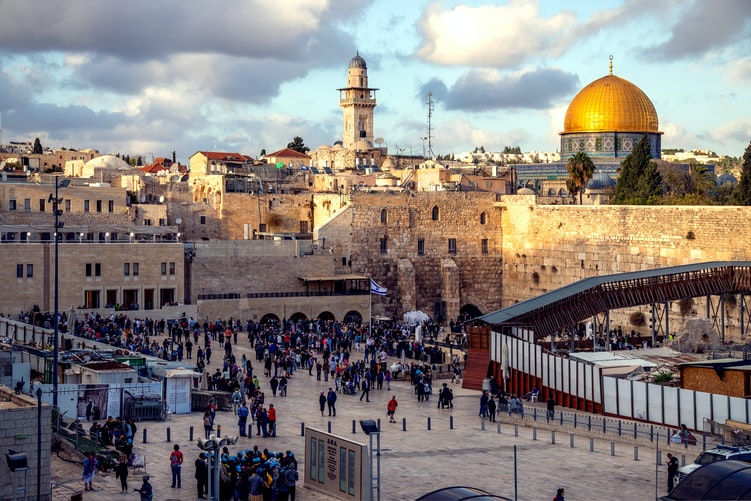Israeli history is incomplete without a mention of its ancient civilizations. Among the more prominent are ancient Egyptian civilization, Roman and Biblical periods, and the period of Israelite kings and the beginning of the Jewish state. Israel was able to build a number of walls for fortification during this period, as well as acquire possession of neighboring cities like Jerusalem, Dead Sea, and Nazareth in the days of the Bible. Today, Israel is one of the nations receiving the most tourists, both domestic and international. Israel tourism is enjoying tremendous growth and expansion at present and welcomes hundreds of thousands of visitors from around the globe every year. It is perhaps for this reason that the government has decided to strengthen its ties with all aspects of Israel’s tourism sector by offering financial incentives to those who wish to undertake tours in different parts of the country.

Why Is Israeli History Important?
Israel history may not be representative of all aspects of world Jewry’s history, but nevertheless, many aspects are reminiscent of the past. For example, the ancient Egyptian Jews, who inhabited the Holy Land a thousand years before Christ, built pyramids that still stand today as a testimony to their sophisticated architectural skills. The Egyptians, being people of great ingenuity, managed to build the Great Pyramids in less than ten years, using blocks only. Similarly, Israelite architecture of yesteryear is remembered today in synagogues, homes, and monuments.
The demographic makeup of Israel today, following the creation of the state in the 1947 UN resolution, is majority Jewish, along with many Arab minorities. Most of Israel’s recent growth, both in terms of permanent residents and those who have become citizens over time, has been due to international Jewish immigration, both permanent and temporary residents, and naturalization, which is now a common law right for Jews coming to the country. Despite the demographics, however, Israel has seen significant changes in the last century, particularly in its relations with its neighbors, especially with the expansion of its borders through land stolen from Arabs in Egypt, Syria, and Jordan.
Key Locations In Israel
A central point of contention between Israel and its neighboring states is the question of Jerusalem, which the Arabs want for their holy temple. Israelis regard the Temple Mount and al Dome as holy places and claim that they hold sacred and special meaning for their ancestors. However, the Muslim world considers all of Jerusalem to be Islamic holy land and any move by Israel to occupy the Temple Mount would instantly result in violent repercussions. As the war started in June of 1948, both sides escalated their rhetoric, often threatening violence to both civilian populations and occupying forces. Relationships with neighboring Arab states deteriorated to the point of actually cutting off all ties, and when the Yom Kippurth Day came, which commemorates the destruction of the Temple Mount by Jewish rebels in Israel, Arab countries boycotted the ceremony, which prompted the formation of the United Nations Security Council.
In Israel’s post-Cold War era, a new population was assimilated into the Jewish community in anticipation of the creation of a democratic state, and many left their native lands en masse to make alia a state of refuge. Some came to Israel specifically to avoid serving in the military, while others came to fill the need for work in the new security zones that Israel created in the West Bank, Golan Heights, and eastern Jerusalem. The creation of these security zones was meant to assist the growing Jewish population of the state, but the changing demographics of the 1948 war made life tough for those who chose to live within the new states. Many Arabs who settled in the West Bank began to form armed gangs against the Jews, and checkpoints were built along the border to prevent entry of goods and vehicles from the outside world. By the time the Six-Day War broke out in the summer of 1947, however, both sides were aware of the volatile security situation that Israel was facing, and tanks and armoured personnel carriers rolled across the border to face off against each other in what became the Six Day War.
Conflict And Security Issues
As the fighting continued, more Arab armies were massed onto the front lines, and Israel began to rely on U.S. military aid in an attempt to keep intact the Israel Army. This included Israeli soldiers who took part in joint manoeuvres with the American GI’s in Iraq during the Desert War. This experience gained the attention of the young Prime Minister Yitzhak ben Israel when he sent a letter to then President Harry Truman requesting American military aid in dealing with the escalating threat from the newly formed Iraqi army. Ultimately, the United States did provide much needed equipment, arms, and advice to the fledgling Israeli military, and Israel was able to defeat the invading Iraqi army in the Yom Kippur War.

Daniel Hughes is a journalist specializing in news coverage and cultural exploration. He focuses on delivering insightful articles that highlight historical significance, current events, and travel experiences, aiming to provide readers with engaging and informative content.
